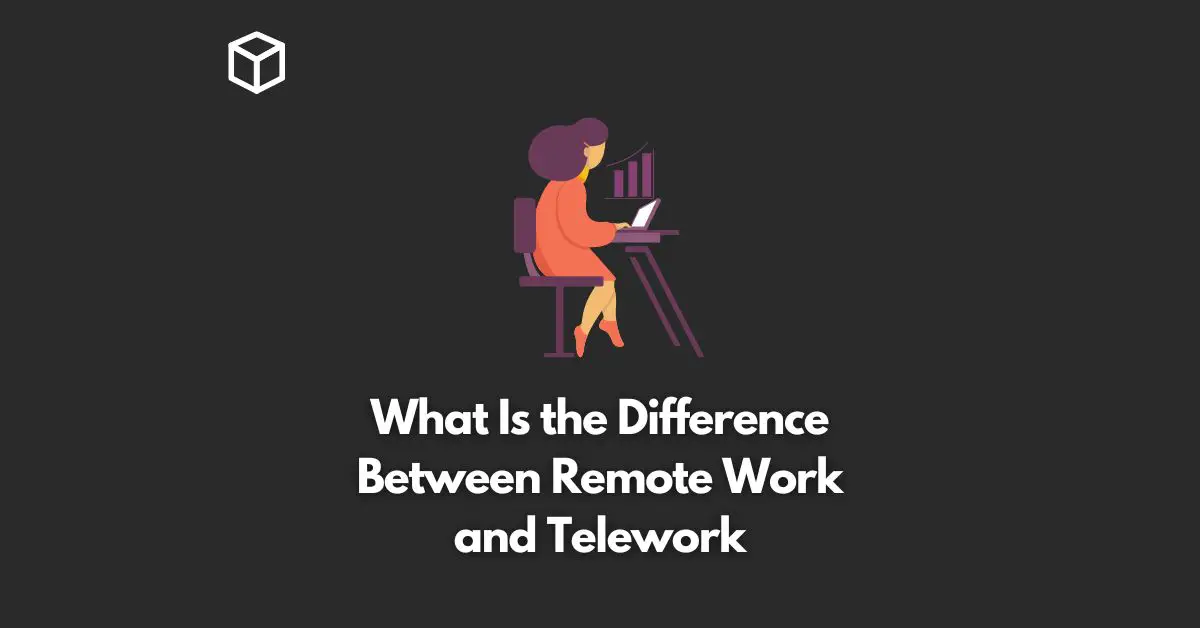In this article we will learn what is Remote work and Telework and what are the differences between these two.
What is Remote Work
Remote work is a labor model that extends beyond the traditional office setup, giving employees the liberty to work from anywhere, whether it’s their home, a nearby coffee shop, or halfway across the world.
The primary requirement is that they have stable internet connectivity to access company resources and communicate with their team.
Remote work is becoming increasingly popular because of its inherent flexibility.
Employees have the freedom to choose their preferred working environment, which can be tailored to their specific needs and lifestyle.
For instance, they can choose a quiet location to focus better on their work, or they might opt for a more dynamic environment if it fosters creativity.
This flexibility extends to work hours as well, enabling employees to work around other commitments such as studying, traveling, or familial obligations.
Thus, remote work has become a popular choice among digital nomads, students and individuals who cannot commit to traditional working hours.
Moreover, companies adopting a remote work model can access a global talent pool, not being restricted by geographical boundaries.
However, the adoption of this model comes with its unique challenges like managing remote teams, ensuring efficient communication and maintaining work-life balance for the employees.
What is Telework
Telework is another flexible working model, although it differs subtly from remote work.
Also known as telecommuting, it allows employees to perform their duties from an offsite location, such as home, another branch office, or a coworking space.
While telework also offers the convenience of working from an offsite location, it differs from remote work in the degree of proximity to the main office.
Teleworkers typically live closer to the organization’s primary office and may be required to attend in-person meetings or events occasionally.
As a result, telework may offer a middle ground between a traditional office setting and a fully remote work situation.
It’s ideal for roles that require substantial solitary work such as writing, research, reading, data analysis and computer work.
However, similar to remote work, teleworking also presents its unique challenges.
It requires robust time management skills, a clear understanding of expectations and a structured work routine.
It also necessitates a proper working space at home or the chosen location to maintain a professional environment conducive to productivity.
Comparing Remote Work and Telework: Which Is Better?
While the difference between remote work and telework might seem subtle, these models are significantly distinct and serve different purposes.
The choice between these two largely depends on individual lifestyle, responsibilities, career goals and geographic location.
For instance, telework could be an optimal solution for parents or full-time caregivers who require flexibility but also want to stay geographically connected to their workplace.
The occasional requirement of being physically present in the office provides a blend of personal interaction and remote convenience.
On the other hand, remote work is a perfect fit for digital nomads, individuals who enjoy traveling, or people living in remote areas.
This model allows them to maintain a consistent work-life without being tethered to a specific location.
Navigating the Challenges of Remote Work and Telework
While both remote work and telework offer significant benefits such as flexibility, reduced commuting time and potential cost savings, they also present unique challenges.
Some of the common challenges include isolation, time management issues, work-life balance and technological hurdles.
To mitigate these issues, organizations must create robust policies, provide necessary support and foster a culture that empowers their employees.
This includes establishing clear communication channels, offering flexible schedules, providing technical support and encouraging regular virtual social activities.
Moreover, employees need to cultivate disciplined work habits, create a dedicated workspace and maintain a healthy work-life balance to thrive in a remote or telework setting.
Conclusion: Striking a Balance
Ultimately, the choice between remote work and telework is subjective and depends on the individual’s unique circumstances and the nature of their work.
Both models offer more flexibility than traditional office-based work and cater to the evolving needs of the modern workforce.
Despite the challenges, with the right strategies, remote work and telework can lead to increased productivity, higher job satisfaction and better work-life balance.
They represent the future of work, redefining traditional working models and giving individuals the flexibility to tailor their work style to their lifestyle.





